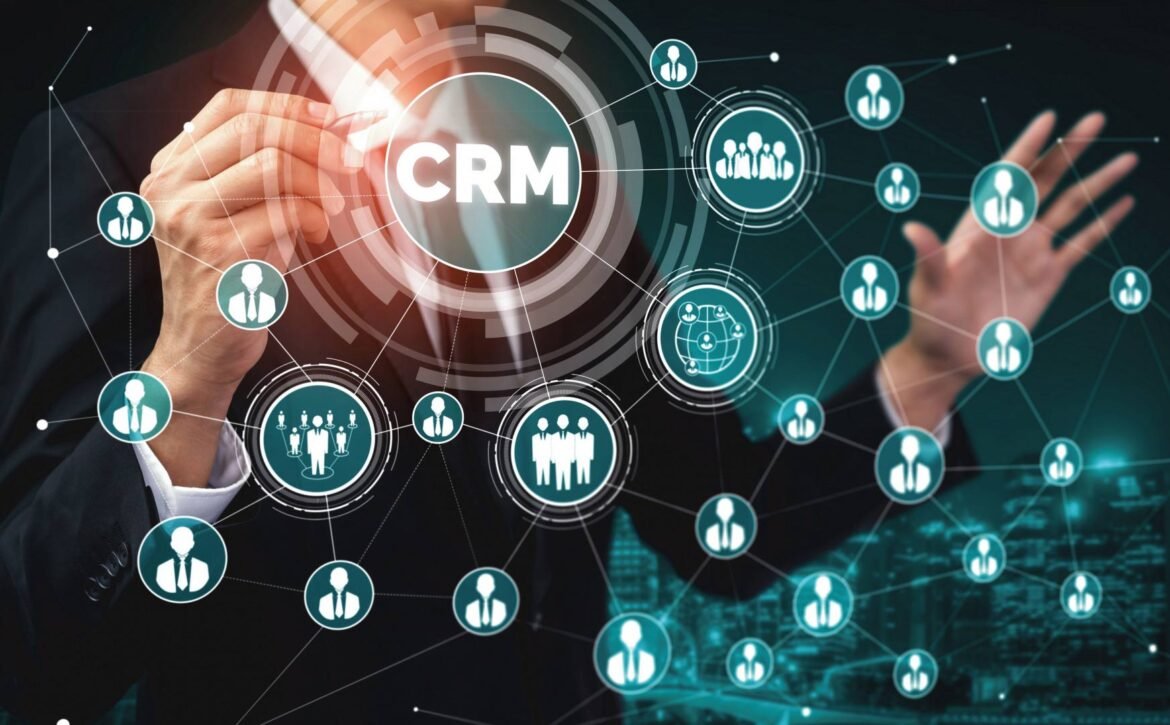Master 10 expert tactics to drive high-quality leads. Transform your B2B sales funnel with these powerful strategies.
Table of contents
1. Challenges in Modern Lead Generation
1.1. Leverage Predictive Analytics for Lead Scoring
1.2. Implement Account-Based Marketing (ABM) with AI
1.3. Utilize Intent Data for Timely Engagement
1.4. Harness the Power of Content Syndication
1.5. Optimize your Lead Magnets
1.6. Leverage Social Selling
1.7. Invest in Video Marketing
1.8. Create high-value webinars
1.9. Implement multi-touch attribute models
1.10. Nurture leads with advanced marketing automation
2. Summing It Up
Currently, significantly marked by certain levels of B2B business velocities, the demand for high-quality leads is higher than ever. With increased competition and changing consumers’ buying preferences, what organizations have realized is that MQL generation is no longer adequate. There is now a trend of targeting more leads but making sure they are of high-quality leads that are much closer to the Ideal Customer Profile (ICP). This strategic pivot is supported by recent industry data: as per HubSpot, a staggering 61% of B2B marketers are struggling with lead generation and, even more—aa whopping 77%—are focused on lead quality rather than lead quantity. These statistics highlight a crucial truth: It is more of a working proposition about the kind of prospect information you would like to accumulate and the kind of prospect information you need for the propositions that the firm would wish to sell its products and services.
The changing face of the market requires the use of high-level approaches to lead generation as well as implementation of the best high-tech elements. When organizations pay obsessive attention to lead quality, they make certain that the pipelines are always full of the right prospects. Each of the strategies described below draws from the existing best practices and some of the latest approaches that will help enhance the quality of your leads. By applying these strategies, the organizations can have a better understanding of and approach the possible customers/clients and increase the conversion rate of high-value clients through long-term and sustainable business organizational development, as well as gain a competitive advantage.
1. Challenges in Modern Lead Generation
However, as one prepares to look at the intricate techniques that can turn around this aspect of the operation, it is imperative to consider the problems associated with the complex methodologies that are likely to be deployed for this purpose. Starting with data quality problems right up to the exchanges concerning the incorporation of new technologies, businesses face challenges to achieve the best outcome. Managing these factors well, on the other hand, is important in realizing the potential of powerful lead generation strategies.
With such ideas in mind, let’s look at the following strategies that are anchored on best practice to help improve your lead generation endeavors and guarantee you that your pipeline is full of well-qualified leads waiting to be closed.
1.1. Leverage Predictive Analytics for Lead Scoring
Scoring of leads has become easy due to predictive analytics, and this has made lead generation change a lot in the companies. Through the use of historical data and figures on customer interaction, the technology is able to predict which among the leads will most likely complete a conversion.
Advanced Targeting: When used in conjunction with CRM, the application of predictive analytics will help you categorize the audience in a much better way. This shall enable the marketing and sales teams to prioritize leads that demonstrably behave like those with the potential of converting.
Continuous Refinement: Since your predictive model is updated using new data, the lead scoring improves with time since the model for the scoring improves overtime.
Pro Tip: The changes in the market should also be reflected in your lead scoring, and for this, your predictive model should be frequently updated and the data used should be recent.
1.2. Implement Account-Based Marketing (ABM) with AI
Account-Based Marketing (ABM) is a strategic approach where marketing is directed to high-potential accounts with specialized approaches. ABM can go to the next level if it is integrated with the use of AI.
Precision Targeting: Technographic data, intent data, or even firmographic data may be passed through an AI algorithm to find accounts that look a lot like your ICP. This makes it possible to follow extremely targeted approaches to communication.
Scalability: Traditional ABM usually requires intensive analytics work to maintain the account-tiered approach, whereas AI-driven ABM can scale automation across many different accounts while still being uniquely personal.
Pro Tip: Integrate AI in such a way that it adapts your ABM strategy within the engagement data that comes from target accounts.
1.3. Utilize Intent Data for Timely Engagement
Intent data is about the behavior of your potential leads on the internet and can tell you when these decision makers are most engaged in content pertaining to your solution. Hence, by leveraging on the above-mentioned data, one can definitely reach out to leads at a time when the results are most successful.
Behavioral Analysis: Intent data enables one to know the buying stage of his/her prospects. For instance, if a lead is reading articles on topics such as ‘best practices’, then he is in the awareness stage, while if he is comparing vendors, then he is in the decision stage.
Personalized Outreach: Leverage the insights gathered through intent data to develop highly targeted messages that are appropriate for the specific stage of the buyer’s journey.
Pro Tip: It is recommended to integrate first- and third-party intent data to get the best of both worlds when understanding the lead’s journey and defining the order of actions.
1.4. Harness the Power of Content Syndication
Content syndication is a technique that involves posting your content on other websites and such platforms. It can be used effectively to become a potent lead generation mechanism if well deployed.
Targeted Distribution: Working with syndication partners, choose those that are most relevant to your ICP. This in a way makes it easier to ensure that the leads you get from the various platforms are usually better and more qualified.
Quality Control: Engage in targeting options that are provided by the partners, such as the industry, job title, company size, or any other that would help get the right content to the right people.
Pro Tip: Monitor the overall syndication of the content to find out which platform produces qualified traffic and such; adjust the strategy.
1.5. Optimize your Lead Magnets
Lead magnets are part and partial of the lead generation process, but how effective they will be depends on relevance and the value provided. Some of the advanced techniques that can be used are to create lead magnets that address the specific challenges or topics of interest for the ICP.
Personalized Lead Magnets: Create leads for each type of people that you are targeting as your audience. Examples of the related topics include whitepapers on “Advanced AI in Marketing” or eBooks on “Implementing AI for SMEs.”
Interactive Content: It may be embedded lead magnets like calculators, assessments, and quizzes to be more engaging and help the user understand more about their wants or needs.
Pro Tip: Ongoing optimization of the basics of your lead magnets, including formatting, topics, and CTAs, can be a great way to determine which ones produce the most valuable leads.
1.6. Leverage Social Selling
Social selling is a strategy that encompasses the use of social media to interact with potential buyers, create rapport, and foster them into becoming customers. B2B is especially helpful because a large audience, such as decision-makers, use various platforms, including LinkedIn.
Thought Leadership: Engage the sales team in writing articles that are informative; this way, the team will be able to share insights on the subject matter. This is a way of creating trust, and at the same time, make sure that your brand is always on your customers’s radar.
Personalized Engagement: Conduct lead search using social listening tools and directly communicate with such leads, provided they are discussing content related to your business. A social approach is also preferred, as reaching out to people is easier and more efficient than conventional ways.
Pro Tip: Detail: Your sales team should always ensure they create and sustain good online presences since this will help establish credibility with the potential leads.
1.7. Invest in Video Marketing
Video is still one of the most popular types of content; it is especially useful when it comes to explaining something in detail. The engaging content includes material of high quality, which can help to establish a conversation with the leads and serve their interests.
Educational Content: Develop video content that informs your audience on new trends, tips, and advice concerning your products and services. This places your brand in a strategic resource status.
Personalized Video Outreach: Visual communication tools that enable you to create customized videos targeted at particular leads or accounts where you demonstrate how your product can address their needs.
Pro Tip: Use video analytics that provide insights on engagement and enable you to distinguish between high-quality leads and the videos that drive them.
1.8. Create high-value webinars
Webinars are another great tool to generate leads if they are conducted on themes that would be of great interest to your ICP. However, to keep your audience fully engaged and interested, it is vital to make your webinars as informative as possible.
Expert Panels: Get speakers from within the industry to address your audience during webinars. Their input brings realism and, subsequently, a more professional audience.
Interactive Elements: Employ polls or questionnaires, question and answer sessions, as well as live chats to keep the participant interested as well as get key insights from them about their interests and issues.
Pro Tip: Capture the details of the participants in the webinar and follow up after the event, offering them related content or products covered in the webinar.
1.9. Implement multi-touch attribute models
It is important to comprehend the path that leads take before they can convert in order to level up the lead generation process. Multi-Touch Attribution Models reveal the touch points that have the largest positive impact on the quality of the leads.
Data-Driven Insights: Leverage more sophisticated methods to determine the specific marketing touch points and campaigns that generate better leads. This makes it possible for you as the client to be able to manage resources in the best way that is possible.
Optimization: Continue to optimize your marketing efforts with attribution information as it applies to each channel and tactic you employ.
Pro Tip: Integrate MTA and then integrate it with predictive modeling to determine which media touchpoints and marketing approaches will produce high-quality leads in the future.
1.10. Nurture leads with advanced marketing automation
Marketing automation solutions have become relatively sophisticated recently to provide for lead nurturing through more elaborate multi-step communications. It is critical, particularly for lead nurturing, where it is possible to keep in touch with a lead that may not be ready for purchase but is highly valuable.
Dynamic Content: Implement dynamic content to convey targeted and relevant messages to the leads based on their behavior, the type of leads, and their position in the cycle.
Lead Scoring Integration: It is important to also align your lead scoring with the automation platform used through a field to pass qualified leads and allow other leads to remain engaged in nurturing programs.
Pro Tip: Regularly review and optimize your automated workflows to ensure they remain aligned with your evolving lead-generation strategies.
2. Summing It Up
High-quality leads are not easy to generate, and it involves the use of technology, complicated techniques, and the knowledge of customers’ potential. With predictive analytics, advanced ABM, intent data, content syndication, perfect lead magnets, social selling, video marketing, high-value webinars, multi-attributed metrics, and progressive marketing automation, you can proactively create a lead generation mechanism that not only boosts pipeline levels but does it with fit and is ready to convert prospects.
Admittedly, the B2B environment will continue to change in the foreseeable future, which means that using these efficient strategies will be vital for building a strong competitive advantage and achieving long-term revenue growth.
Visit Our SalesMarkBlog Section to Uncover the Sales Strategies That Ignite Your Sales Journey!










